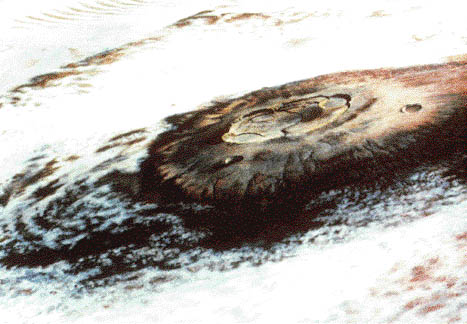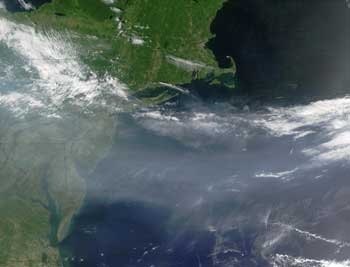][/caption]
There are numerous types of clouds, but they are generally classified differently. Some organizations classify them into two main groups while others organize them into three or four groups or even more. The National Weather Service divides clouds into three groups – low, medium, and high clouds. In meteorology, there are 27 types of clouds with nine in each of the three categories – low, medium, and high.
The lowest level is between the surface and up to two kilometers in the atmosphere. Low level clouds include cumulus, stratocumulus, stratus, and cumulonimbus clouds. Cumulus clouds are one of the most well known types. They are the puffy clouds that look like sheep or clumps of cotton balls. They usually occur where warm air rises and forms condensation when it hits cool air. Stratocumulus clouds are also rounded clouds, but they are darker than cumulus clouds. Stratus clouds are flatter and more horizontal. They are the type of clouds that makes a day seem hazy and cloudy.
The medium level is measured at different elevations depending on the region. This depends on a number of factors including elevation and weather. In the polar region, the middle clouds are between two and four kilometers high; in the temperate regions, these clouds are between two and seven kilometers. They are between two and eight kilometers high in the tropical regions. The mid level clouds are altocumulus, altostratus, and nimbostratus. Altocumulus clouds are somewhat patchy, round forms that are white or grey. The often come before a cold front and also predict thunderstorms. Because these clouds look darker they can seem intimidating.
Altostratus clouds are part of the stratus family of clouds. They are like a sheet of clouds somewhere in between the nimbostratus and cirrostratus in color and often turn the whole sky grey. The nimbostratus clouds are very dark grey sheets of clouds. They look similar to other stratus types, but are much darker.
High altitude clouds are also located at different heights depending on region. They can be found between three and 18 kilometers depending on the region. They are found at a much higher altitude in the tropical regions. The clouds at high altitudes are different cirrus clouds and include cirrus, cirrocumulus, and cirrostratus clouds. Cirrus clouds are the thin, wispy clouds found high in the atmosphere. Because of their thin appearance, they are sometimes called mare’s tail; these clouds form when ice vapor freezes high in the sky. Cirrocumulus clouds appear to be a sheet of tiny cumulus clouds, so they almost look as though they are ripples on a pond. Cirrostratus clouds are a mix between cirrus and stratus clouds. They are thin, but resemble a sheet like stratus clouds. Often, they appear to form a halo around the Sun because they are so thin.
Universe Today has articles on stratus clouds and cloud types.
For more information, check out cloud classifications and types of clouds.
Astronomy Cast has an episode on Earth you will want to check out.



